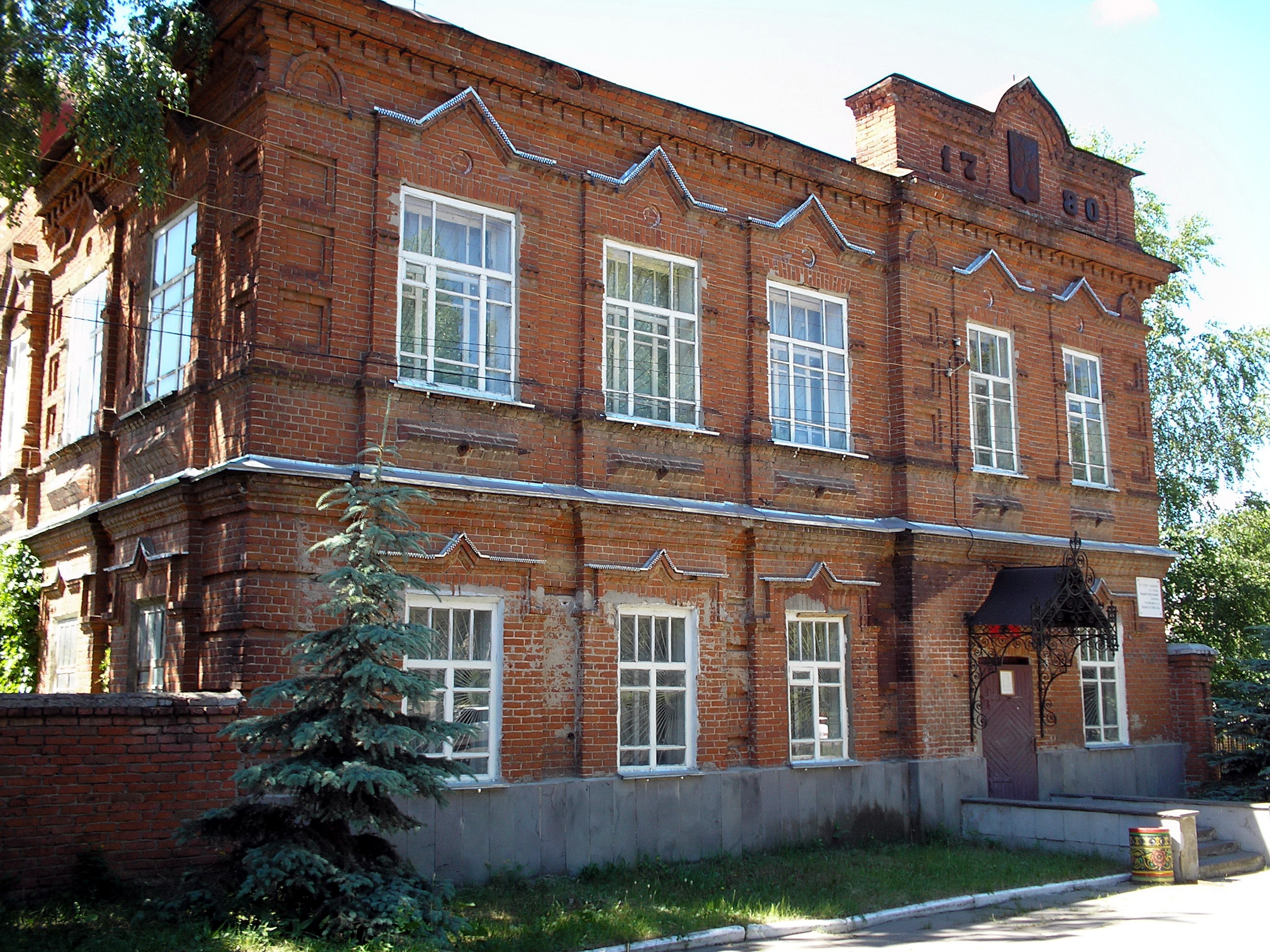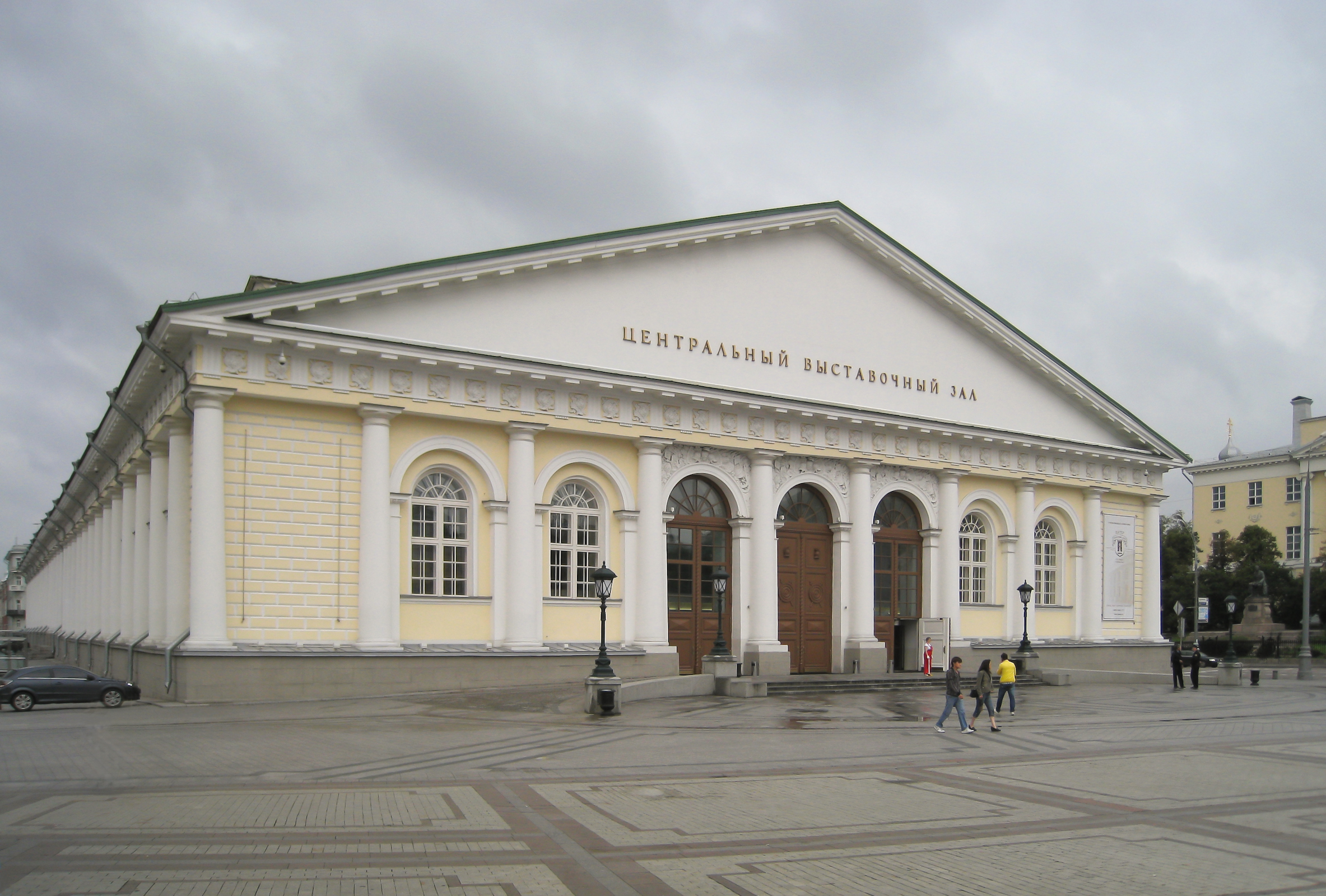|
Vsevolod Bazhenov
Vsevolod Andreevich Bazhenov (russian: Все́волод Андре́евич Баже́нов; February 18, 1909 – August 2, 1986) was a Soviet Union, Soviet, Russians, Russian painter who lived and worked in Leningrad. He was a member of the ''Leningrad branch of Union of Artists of Russian Federation'', and regarded as a known representative of the ''Leningrad School of Painting, Leningrad school of painting'', most known for his landscape paintings. Biography Vsevolod Andreevich Bazhenov was born on February 18, 1909 in the town Serdobsk, in the Saratov Governorate of the Russian Empire into an artistic family. His father was an artist and taught in a real school. He became the first teacher of Vsevolod. Later he studied in Serdobsk art studio of artists ''A. Gofert'' and ''N. Kuzmin''. Besides drawing and painting, Bazhenov was a music lover. His mother Evgenia Nikovaevna was a pianist. Bazhenov graduated high school in 1928 and moved to Leningrad. Between the years of ... [...More Info...] [...Related Items...] OR: [Wikipedia] [Google] [Baidu] |
Serdobsk
Serdobsk (russian: Сердо́бск) is a types of inhabited localities in Russia, town and the administrative center of Serdobsky District in Penza Oblast, Russia. Population: Geography It is located on the Serdoba River (Don River (Russia), Don's drainage basin, basin), southeast of Penza. Climate The climate is moderately Continental climate, continental. The winter in Serdobsk is moderately cold and long lasting from the beginning of November to the end of March. The coldest month is February with an average temperature of -9.1 °C. Summer is warm, lasting from late May to early September; the average July temperature is 20.4 °C. The average annual temperature is 5.5 °C. The climate is similar to Moscow, but the continentality is higher and the precipitation lower. History Founded by Alexander Aleksandrovich of Penza in 1698, it has been known since 1699 as Serdobinskaya sloboda (). Since the mid-18th century, it had been called Bolshaya Serdoba (). ... [...More Info...] [...Related Items...] OR: [Wikipedia] [Google] [Baidu] |
Great Patriotic War
The Eastern Front of World War II was a theatre of conflict between the European Axis powers against the Soviet Union (USSR), Poland and other Allies, which encompassed Central Europe, Eastern Europe, Northeast Europe (Baltics), and Southeast Europe (Balkans) from 22 June 1941 to 9 May 1945. It was known as the Great Patriotic War in the Soviet Union – and still is in some of its successor states, while almost everywhere else it has been called the ''Eastern Front''. In present-day German and Ukrainian historiography the name German-Soviet War is typically used. The battles on the Eastern Front of the Second World War constituted the largest military confrontation in history. They were characterised by unprecedented ferocity and brutality, wholesale destruction, mass deportations, and immense loss of life due to combat, starvation, exposure, disease, and massacres. Of the estimated 70–85 million deaths attributed to World War II, around 30 million occurred on th ... [...More Info...] [...Related Items...] OR: [Wikipedia] [Google] [Baidu] |
Soviet Russia (exhibition, 1960)
First National Art Exhibition "Soviet Russia" (Moscow, 1960) (russian: Первая Республиканская художественная выставка "Советская Россия" 1960 года) was one of the largest Soviet art exhibitions of the 1960s. The exhibition took place in Manezh Exhibition Hall. History and organization In four months of the exhibition was visited by over 400,000 people. Organization and preparation of the First National Exhibition engaged specially formed Exhibition Committee in the amount of 97 most authoritative experts in the field of fine arts. It was published Catalog of the exhibition. In total, the Exhibition displayed more than 2,400 works of art of painters, sculptors, graphics, masters of arts and crafts, artists of theater and cinema. Many of art works have been purchased for the largest Soviet Art museums, including the Russian Museum, the Tretyakov Gallery, and others. After the Exhibition in Moscow there were organized tra ... [...More Info...] [...Related Items...] OR: [Wikipedia] [Google] [Baidu] |
Annual Exhibition Of Leningrad Artists (1960) , in biology
{{disambiguation ...
Annual may refer to: *Annual publication, periodical publications appearing regularly once per year **Yearbook **Literary annual *Annual plant *Annual report *Annual giving *Annual, Morocco, a settlement in northeastern Morocco *Annuals (band), a musical group See also * Annual Review (other) * Circannual cycle A circannual cycle is a biological process that occurs in living creatures over the period of approximately one year. This cycle was first discovered by Ebo Gwinner and Canadian biologist Ted Pengelley. It is classified as an Infradian rhythm, whi ... [...More Info...] [...Related Items...] OR: [Wikipedia] [Google] [Baidu] |
Exhibition Of Leningrad Artists (Russian Museum, 1960)
Exhibition of Leningrad artists of 1960 (russian: "Выставка произведений ленинградских художников 1960 года") become one of the largest Soviet Art Exhibition of 1960 year. The Exhibition took place in State Russian Museum. History and Organization For the organization and preparation of Exhibition of 1960 was formed specially Exhibition Committee which consisted of 49 the most authoritative art-experts. Exhibition Catalog was published. In total, the Exhibition displayed almost 950 works of art of painters, sculptors, graphics, artists of theater and cinema, masters of arts and crafts. At whole Exhibition attended over 600 artists of the Leningrad. Contributing Artists In the largest Department of Painting were exhibited art works of 295 authors. There were Piotr Alberti, Evgenia Antipova, Taisia Afonina, Vsevolod Bazhenov, Irina Baldina, Nikolai Baskakov, Leonid Baykov, Yuri Belov, Piotr Belousov, Zlata Bizova, Mikhail Bobys ... [...More Info...] [...Related Items...] OR: [Wikipedia] [Google] [Baidu] |
Anniversary Art Exhibition (Leningrad, 1957)
The ''Anniversary Art Exhibition (Leningrad, 1957)'' (in full the ''Anniversary Art Exhibition of the Leningrad Artists, 1957 – '' russian: Выставка произведений ленинградских художников 1957 года), dedicated to the 40th Anniversary of the October Revolution (russian: italic=yes, 1917–1957. Выставка произведений ленинградских художников 1957 года), was one of the most significant events of Soviet art history in the 1950s and in the whole of early Khrushchev Thaw. The exhibition took place in the State Russian Museum. History and Organization The ''Anniversary Art Exhibition'' was opened on 3 October 1957. Its organization and preparation was carried out by a specially formed exhibition committee of 39 authoritative art experts. An exhibition catalog was published. The exhibition displayed 1,750 works by painters, sculptors, graphics, masters of arts and crafts, and theater and cinema ... [...More Info...] [...Related Items...] OR: [Wikipedia] [Google] [Baidu] |
Autumn Exhibition (Leningrad, 1956)
Autumn Fine Art Exhibition of Leningrad's artists of 1956 (russian: Осенняя выставка произведений ленинградских художников 1956 года) become the largest Soviet Art Exhibition of 1956 and for the time of early ''Khrushchev Thaw''. The Exhibition took place in '' Leningrad Union of Soviet Artists Exhibition Halls'' on Bolshaya Morskaya st. 38. History and Organization The Autumn Fine Art Exhibition of 1956 was opened on December 5. Organization and preparation of the Autumn Exhibition engaged specially formed Exhibition Committee which consisted of the most authoritative art-experts. It was published a Catalog of the exhibition. In total, the Exhibition displayed almost 2,000 works of art of painters, sculptors, graphics, masters of arts and crafts, artists of theater and cinema. The Autumn Exhibition of 1956 was attended by 473 artists of the Leningrad. Contributing Artists In the largest Department of Painting were exhibit ... [...More Info...] [...Related Items...] OR: [Wikipedia] [Google] [Baidu] |
Autumn Exhibition (Leningrad, 1958)
Autumn, also known as fall in American English and Canadian English, is one of the four temperate seasons on Earth. Outside the tropics, autumn marks the transition from summer to winter, in September (Northern Hemisphere) or March ( Southern Hemisphere). Autumn is the season when the duration of daylight becomes noticeably shorter and the temperature cools considerably. Day length decreases and night length increases as the season progresses until the Winter Solstice in December (Northern Hemisphere) and June (Southern Hemisphere). One of its main features in temperate climates is the striking change in colour for the leaves of deciduous trees as they prepare to shed. Date definitions Some cultures regard the autumnal equinox as "mid-autumn", while others with a longer temperature lag treat the equinox as the start of autumn. In the English-speaking world of high latitude countries, autumn traditionally began with Lammas Day and ended around Hallowe'en, the approximate m ... [...More Info...] [...Related Items...] OR: [Wikipedia] [Google] [Baidu] |
Exhibition Of Leningrad Artists (1951)
Exhibition of Leningrad artists of 1951 (russian: Выставка произведений ленинградских художников 1951 года) became one of the notable event in Art live of Leningrad of the beginning of 1950s. The Exhibition took place in the State Russian Museum. History and organization Exhibition was opened on November, 22, and worked up to December, 4, 1951. Organization and preparation of the annual Exhibition of Leningrad artists engaged specially formed Exhibition Committee which consisted of 26 the authoritative art-experts. It was published a Catalog of the exhibition. Exhibition displayed works of art of leading Leningraf's painters, sculptors, and graphics artists. Contributing artists In the largest Department of Painting were exhibited art works of 126 authors. There were Piotr Alberti, Vladislav Anisovich, Vladimir Avlas, Nikolai Babasuk, Vsevolod Bazhenov, Piotr Belousov, Olga Bogaevskaya, Lev Bogomolets, Piotr Buchkin, Boris Fogel, ... [...More Info...] [...Related Items...] OR: [Wikipedia] [Google] [Baidu] |
Exhibition Of Leningrad Artists (1950)
Exhibition of Leningrad artists of 1950 (russian: Выставка произведений ленинградских художников 1950 года) became one of the notable event in Art live of Leningrad of the beginning of 1950s. The Exhibition took place in the State Russian Museum. History and Organization Exhibition was opened in the end of 1950. Organization and preparation of the annual Exhibition of Leningrad artists engaged specially formed Exhibition Committee which consisted of 23 the authoritative art-experts. It was published a Catalog of the exhibition. Exhibition displayed works of art of leading Leningrad painters, sculptors, and graphics artists. Contributing Artists In the largest Department of Painting were exhibited art works of 79 authors. There were Mikhail Avilov, Nathan Altman, Vsevolod Bazhenov, Mikhail Bobyshov, Olga Bogaevskaya, Lev Bogomolets, Rudolf Frentz, Vladimir Gorb, Nikolai Kostrov, Anna Kostrova, Felix Lembersky, Vladimir Malagys, ... [...More Info...] [...Related Items...] OR: [Wikipedia] [Google] [Baidu] |
Leningrad Union Of Artists
Union of Artists of Saint Petersburg (russian: Санкт-Петербургский Союз художников) was established on August 2, 1932, as a creative union of the Leningrad artists and arts critics. Prior to 1959, it was called " Leningrad Union of Soviet Artists". From 1959 (when it joined the Union of Artists of the RSFSR), it was called as ''Leningrad branch of Union of Artists of Russian Federation''. After the renaming of the city in 1991, it became known as the ''Saint Petersburg Union of Artists''. Members Members of Union of Artists of Saint Petersburg in different years were Mikhail Avilov, Nathan Altman, Mikhail Anikushin, Piotr Alberti, Evgenia Antipova, Taisia Afonina, Vsevolod Bazhenov, Irina Baldina, Nikolai Baskakov, Evgenia Baykova, Piotr Belousov, Yuri Belov, Ivan Bilibin, Veniamin Borisov, Boris F. Borzin, Isaak Brodsky, Piotr Buchkin, Vladimir Chekalov, Evgeny Chuprun, Natalia Dik, Rudolf Frentz, Sergei Frolov, Nikolai Galakhov, Ir ... [...More Info...] [...Related Items...] OR: [Wikipedia] [Google] [Baidu] |
Genre Works
Genre art is the pictorial representation in any of various media of scenes or events from everyday life, such as markets, domestic settings, interiors, parties, inn scenes, work, and street scenes. Such representations (also called genre works, genre scenes, or genre views) may be realistic, imagined, or romanticized by the artist. Some variations of the term ''genre art'' specify the medium or type of visual work, as in ''genre painting'', ''genre prints'', ''genre photographs'', and so on. The following concentrates on painting, but genre motifs were also extremely popular in many forms of the decorative arts, especially from the Rococo of the early 18th century onwards. Single figures or small groups decorated a huge variety of objects such as porcelain, furniture, wallpaper, and textiles. Genre painting ''Genre painting'', also called ''genre scene'' or ''petit genre'', depicts aspects of everyday life by portraying ordinary people engaged in common activities. One comm ... [...More Info...] [...Related Items...] OR: [Wikipedia] [Google] [Baidu] |





